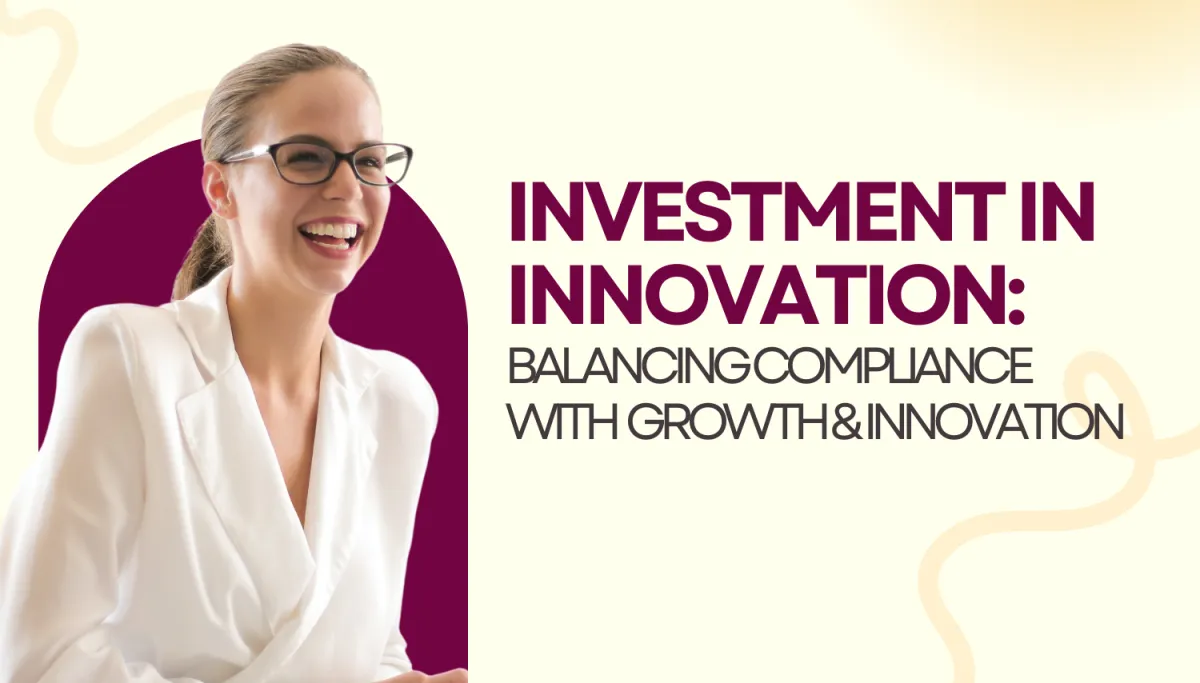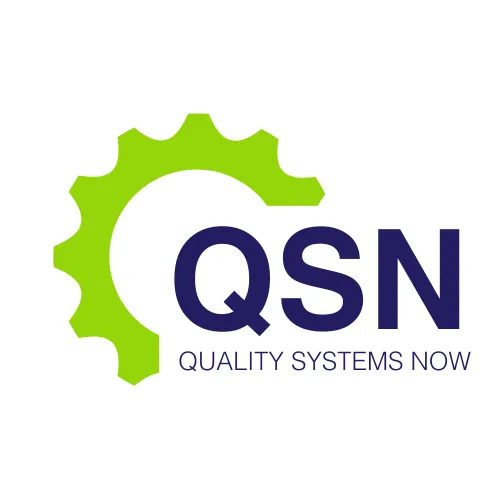LATEST NEWS

Investment in Innovation: Balancing Compliance with Growth and Innovation
Companies face the dual challenge of maintaining stringent regulatory compliance while simultaneously driving innovation and growth. Striking a balance between these seemingly conflicting objectives is crucial for long-term success.
At Quality Systems Now we that a proactive compliance strategy not only safeguards a company against regulatory pitfalls but also creates a foundation upon which innovation can flourish. This article delves into the steps necessary to build a proactive compliance strategy, implement effective compliance training programs, standardize documentation, integrate business processes, optimize resources, and foster continuous improvement—all while supporting innovation and growth.
Building a Proactive Compliance Strategy
A proactive compliance strategy is the cornerstone of balancing regulatory demands with the pursuit of innovation. By anticipating regulatory challenges and embedding compliance into the fabric of the organization, companies can avoid the disruptions caused by non-compliance.
Steps to Build a Proactive Compliance Strategy:
Conduct a Thorough Compliance Audit: Begin by conducting a comprehensive audit of your current compliance status. This audit should identify any gaps in your processes, documentation, and adherence to regulations. A thorough understanding of your compliance standing is critical for developing a robust strategy.
Regularly Review and Update Compliance Processes: Compliance is not static; it evolves with changing regulations and industry standards. Regularly reviewing and updating your compliance processes ensures that your organization remains in line with current requirements and avoids any potential risks.
Engage with Regulatory Experts: Navigating the complex regulatory landscape requires specialized knowledge. Engaging with regulatory experts allows your organization to stay informed about changes in laws and regulations, ensuring that your compliance strategy is always up to date.
Implement a Continuous Monitoring System: To maintain a proactive stance, implement a continuous monitoring system that tracks compliance performance. This system should provide real-time insights, allowing for immediate corrective actions when deviations are detected.
Implementing Effective Compliance Training Programs
Effective compliance training is essential for embedding a culture of compliance within the organization. Training ensures that all employees understand the importance of compliance and are equipped with the knowledge necessary to adhere to regulatory requirements.
Steps to Implement Effective Compliance Training Programs:
Assess Your Current Compliance Knowledge Gaps: Start by assessing the existing knowledge and skills within your organization. Identify any gaps that could lead to compliance risks, and use this assessment to inform your training program.
Develop a Tailored Training Curriculum: Develop a training curriculum specifically tailored to your industry’s regulations and the unique needs of your organization. This curriculum should cover all relevant regulatory requirements and best practices.
Incorporate Real-Life Scenarios and Case Studies: To enhance the effectiveness of your training, incorporate real-life scenarios and case studies. These practical examples help employees understand how compliance issues can arise and how to handle them in real-world situations.
Schedule Regular Refresher Courses: Compliance training should not be a one-time event. Schedule regular refresher courses to ensure ongoing compliance awareness and to keep employees updated on any changes in regulations or internal processes.
Standardizing Documentation and Processes
Consistency in documentation and processes is vital for maintaining regulatory compliance and operational efficiency. Standardization reduces errors, improves communication, and ensures that all employees are following the same procedures.
Steps to Standardize Documentation and Processes:
Review All Existing Documentation and Processes: Begin by thoroughly reviewing all existing documentation and processes. Identify any inconsistencies, gaps, or outdated practices that could hinder compliance or efficiency.
Identify Inconsistencies and Gaps: Pinpoint specific areas where documentation or processes are inconsistent or lacking. These gaps should be prioritized for standardization efforts.
Develop Standardized Templates and Procedures: Create standardized templates and procedures that can be used across the organization. These should be clear, concise, and aligned with regulatory requirements.
Train Your Team on the New Standardized Processes: Once standardization is complete, train your team on the new processes. Ensure that all employees understand how to use the standardized documentation and follow the procedures consistently.
Regularly Review and Update Standards: Like compliance processes, standardized documentation and procedures should be regularly reviewed and updated to reflect changes in regulations, industry standards, and internal practices.
Integrating Business Processes for Maximum Efficiency
Effective process integration breaks down silos within the organization, reducing redundancy and improving communication. This leads to more efficient operations and a stronger alignment between compliance and innovation efforts.
Steps to Integrate Business Processes:
Map Out All Current Processes: Start by mapping out all existing processes within the organization. This mapping should provide a clear picture of how different departments and functions interact.
Identify Overlapping or Redundant Processes: Analyze the mapped processes to identify any overlaps, redundancies, or inefficiencies. These should be targeted for integration or elimination.
Implement Software Solutions for Process Integration: Utilize software solutions that enable seamless process integration. These tools can automate workflows, enhance communication, and ensure that all departments are working towards the same goals.
Foster a Culture of Communication and Collaboration: Integration is not just about processes; it’s also about people. Foster a culture of communication and collaboration across departments to support integrated operations.
Continuously Monitor and Refine Integrated Processes: After integration, continuously monitor the performance of your processes. Use this data to refine and improve integration efforts over time.
Engaging and Optimizing Resources
Optimizing resources ensures that your organization can maintain compliance while also investing in innovation. This involves aligning resources with strategic objectives, providing ongoing training, and leveraging technology.
Steps to Engage and Optimize Resources:
Assess the Current Utilization of Resources: Conduct an assessment of how your resources—human, technological, and financial—are currently being utilized. Identify any areas of underutilization or misalignment with strategic goals.
Align Resources with Strategic Business Objectives: Ensure that all resources are aligned with your organization’s strategic objectives. This alignment helps to prioritize compliance and innovation efforts where they will have the most impact.
Provide Training and Development Opportunities: Invest in training and development to maximize the potential of your human resources. Skilled employees are better equipped to drive innovation and maintain compliance.
Invest in Technology for Resource Efficiency: Leverage technology to enhance the efficiency of your resources. Automation, data analytics, and process management tools can significantly improve both compliance and innovation capabilities.
Continuously Monitor and Adjust Resource Allocation: Regularly review resource allocation to ensure that it remains aligned with strategic goals. Make adjustments as needed to respond to changing priorities or challenges.
Implementing a Continuous Improvement Program
Continuous improvement is essential for maintaining compliance while fostering innovation. By continuously identifying and addressing inefficiencies, organizations can enhance their operations and stay ahead of regulatory changes.
Steps to Implement a Continuous Improvement Program:
Identify Areas for Improvement Through Regular Assessments: Conduct regular assessments to identify areas where improvements can be made. These assessments should be systematic and data-driven.
Set Clear, Measurable Goals for Improvement: Establish specific, measurable goals for your continuous improvement efforts. These goals should be aligned with both compliance requirements and innovation objectives.
Involve All Employees in the Improvement Process: Engage employees at all levels in the continuous improvement process. Their insights and feedback are invaluable for identifying issues and developing solutions.
Implement Changes Using Structured Methodologies: Use structured methodologies like Lean or Six Sigma to implement improvements. These approaches provide a framework for making systematic, data-driven changes.
Monitor Results and Make Adjustments as Needed: After implementing changes, monitor the results to ensure that they are achieving the desired outcomes. Be prepared to make further adjustments if necessary.
Navigating the New Product Development Process
New product development is a critical area where compliance and innovation must go hand-in-hand. Ensuring that products are designed for compliance from the start helps to avoid costly delays and regulatory hurdles later on.
Steps to Navigate the New Product Development Process:
Conduct Thorough Market Research: Begin with detailed market research to identify opportunities, user requirements, and regulatory considerations.
Develop a Clear Product Concept and Prototype: Based on market research, develop a clear product concept and prototype that meets both user needs and regulatory requirements.
Conduct Rigorous Testing: Conduct rigorous testing to ensure that the product complies with all relevant regulations and meets market expectations.
Plan for a Smooth Transition from Development to Production: Develop a detailed plan to transition the product from development to production, including validation and scale-up processes.
Launch with a Strong Marketing and Sales Strategy: Finally, ensure a successful launch with a well-coordinated marketing and sales strategy that highlights both the product’s innovative features and its compliance with industry standards.
Schedule A Call Now
Balancing compliance with innovation is a complex but essential task for any organization in a regulated industry. By building a proactive compliance strategy, implementing effective training programs, standardizing processes, integrating business operations, optimizing resources, and embracing continuous improvement, companies can navigate regulatory challenges while driving growth. With careful planning and execution, it is possible to create a robust compliance framework that not only protects the organization but also supports its innovative endeavors, ensuring long-term success in a competitive market.
